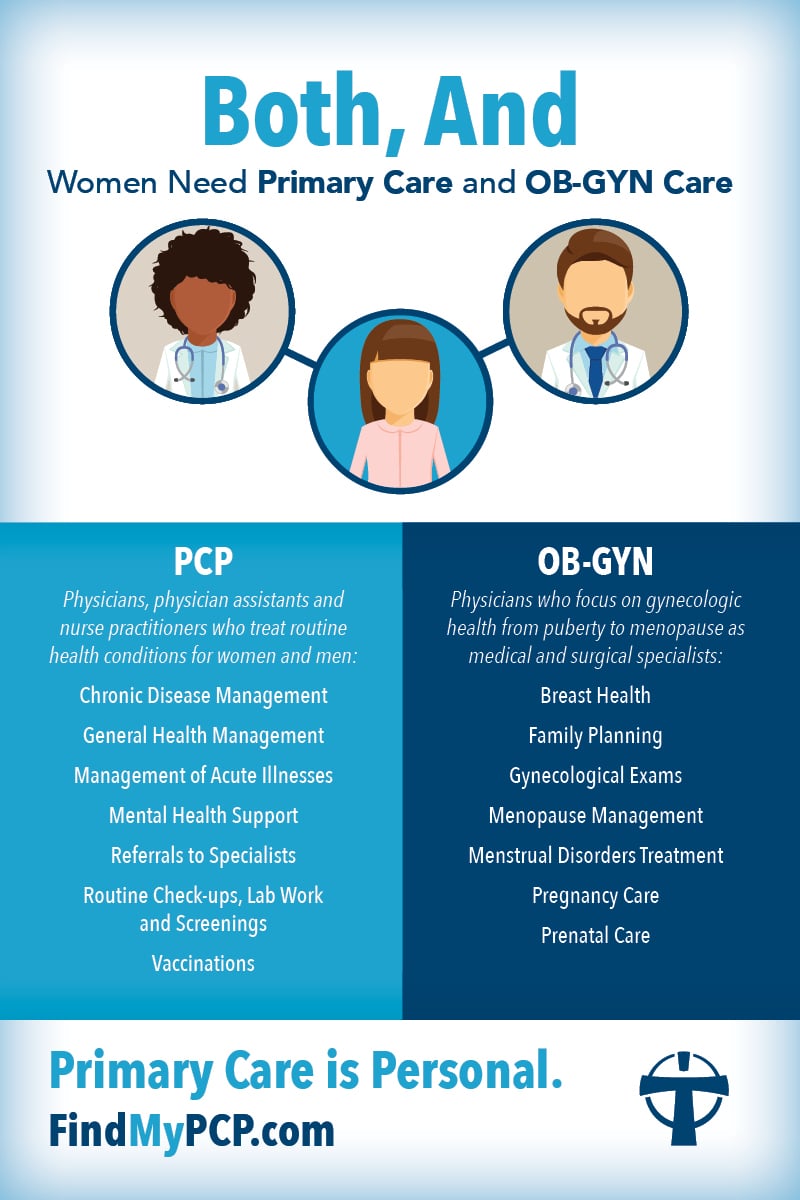Regular check-ins with an OB-GYN are essential for women’s health. But we also know women have other medical concerns that need to be addressed. You are more than the sum of your lady parts.
Even with regular well-woman exams, annual primary care visits are important for women’s health and well-being. Establishing primary care ensures women receive comprehensive care for a wide range of conditions.
Karli M. Boggs, MD, Board Certified OB-GYN with Our Lady of the Lake Physician Group, explains this both-and approach to women’s health.
Definitions: Understand Primary Care and Gyn Care
Primary care providers (PCPs) are physicians, physician assistants and nurse practitioners who offer a broad range of services, including preventive care, management of chronic conditions, and treatment of acute illnesses and injuries. They serve as the first stop on your healthcare journey.
OB-GYNs are physicians who specialize in obstetrics and gynecologic health, focusing on all stages of a woman’s life, from puberty to birthing to menopause, and everything in between. Their expertise encompasses reproductive health, pregnancy care and the management of conditions affecting the female reproductive system. OB-GYNs are trained in both medical and surgical interventions, which allows them to operate and fix problems they evaluate. Dr. Boggs, who is a GYN, focuses specifically on gynecologic health outside of childbirth.
Contrasting Care That Complements
While both PCPs and OB-GYNs play essential roles in women’s healthcare, their areas of focus and expertise differ. A woman’s primary care provider and OB-GYN work together to evaluate and treat the whole person.
PCPs excel in managing general health maintenance, chronic disease management and routine screenings. OB-GYNs, or just GYNs, are experts in reproductive health, pregnancy care and gynecological conditions.
“We focus on different organ systems and have different knowledge bases of disease processes,” Dr. Boggs says. “For example, a PCP wouldn’t do a hysterectomy and an OB-GYN doesn’t treat shoulder pain.”

Why Women Need Both Primary Care and OB-GYN Care
The unique focus areas of PCPs and OB-GYNs make it essential for women to have both types of healthcare providers.
“Most PCPs won’t do a pap smear or manage menstrual problems, and most OB-GYNs won’t evaluate or manage diabetes or high cholesterol,” Dr. Boggs says. “Seeing both providers will ensure all medical concerns and preventive care measures are fully addressed.”
The need for OB-GYN care does not end after childbearing is complete or a hysterectomy, and regular visits should continue every year or every other year.
“OB-GYN care is more than babies and pap smears,” Dr. Boggs says. “Complete exams include breast evaluation, vulvar and vaginal exams.” Prevention is also a big part of this care, including mammograms, vaccines and family planning discussions.
Working Together for Better Health
Dr. Boggs works collaboratively with primary care providers and remembers several patients in recent years who hadn’t seen a PCP regularly.
“They came to me for severe vaginal and vulvar symptoms that are usually seen in people with diabetes,” she says. Lab work confirmed the diagnosis. “I helped them navigate to a PCP who got their diabetes controlled, which ultimately fixed the underlying issue causing their GYN problem.”
In the same way a PCP may notice anemia in a woman’s annual blood work. She may report heavy cycles and that she hasn’t seen an OB-GYN “for years.” The PCP would connect the patient to an OB-GYN for care to regulate her menstrual cycle.
Women’s Healthcare is Personal
In the field of OB-GYN care, the personal connection between provider and patient is paramount.
“There is nothing as personal in the field of medicine as OB-GYN care,” Dr. Boggs says. “Women confide in their OB-GYN their most sensitive concerns and vulnerabilities.”
She says she often has patients tell her how embarrassed they are, or that they couldn’t tell another provider because “it’s too awkward.” She approaches the deeply personal nature of her work through the lens of listening.
“My job is to be as open and understanding as possible so my patient feels comfortable to tell me things that are potentially treatable so I can intervene,” Dr. Boggs says. “When patients open up and I’m able to reassure them that they are not alone in their concern, the shame and fear go away, and a deeper trusted relationship is formed.”
Make Time to Prioritize Your Health and Well-being
“The biggest issue I see on a regular basis is that women take care of everyone else in their lives before they take care of themselves,” Dr. Boggs says. “I frequently remind patients that their time, energy, health, body and spirit are important and deserve the same amount of care as everyone else in their family.”
Taking care of yourself includes both OB-GYN and primary care. Continuing care with an OB-GYN is a life-long relationship and should coincide with primary care.
“Women experience so many transitions in their lifetime, and the role of an OB-GYN is to help them navigate those ups-and-downs,” she says. That includes transitions of postpartum care, menstrual problems and menopausal symptoms.
Dr. Boggs also notes that an OB-GYN can help a teen during her transition from a pediatrician to adult primary care, bridging the gap for many patients.
A Vital Collaboration
Partnership between an OB-GYN and a PCP is essential for women’s health and well-being. By recognizing the distinct roles of each provider and prioritizing comprehensive care, women can proactively manage their health at every stage of life.
By embracing the “both and” approach to healthcare, women can empower themselves to lead healthier, happier lives.




